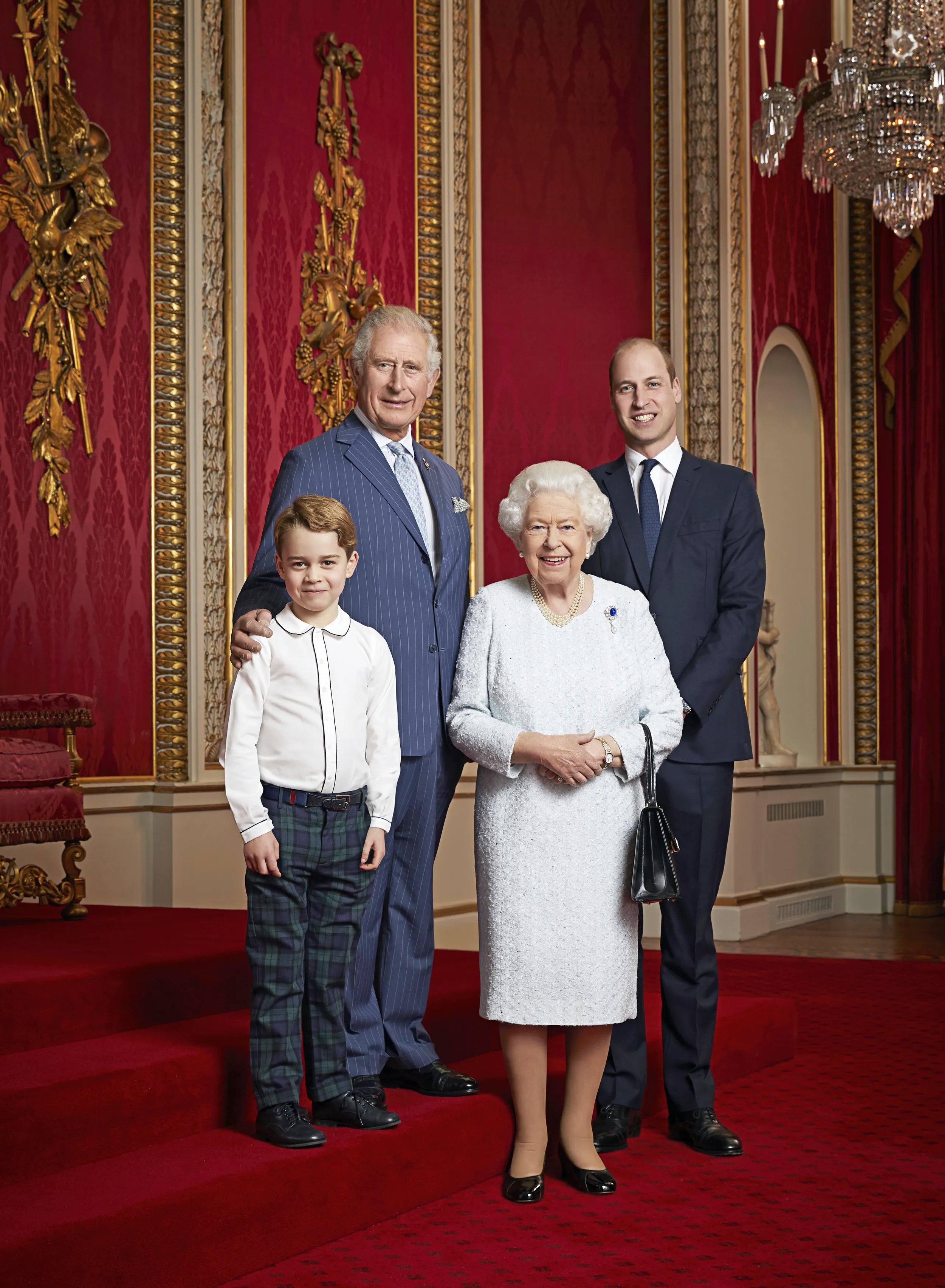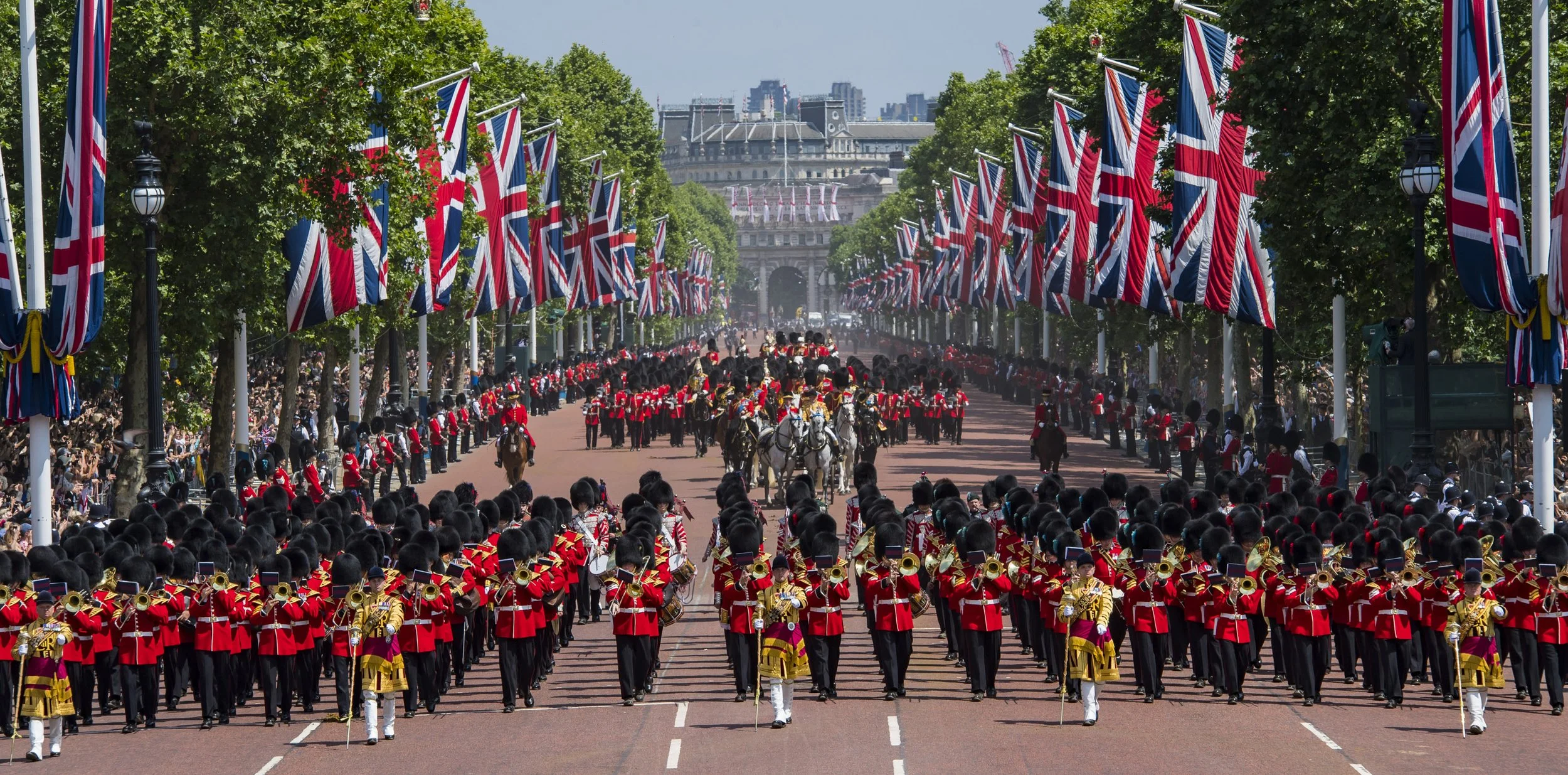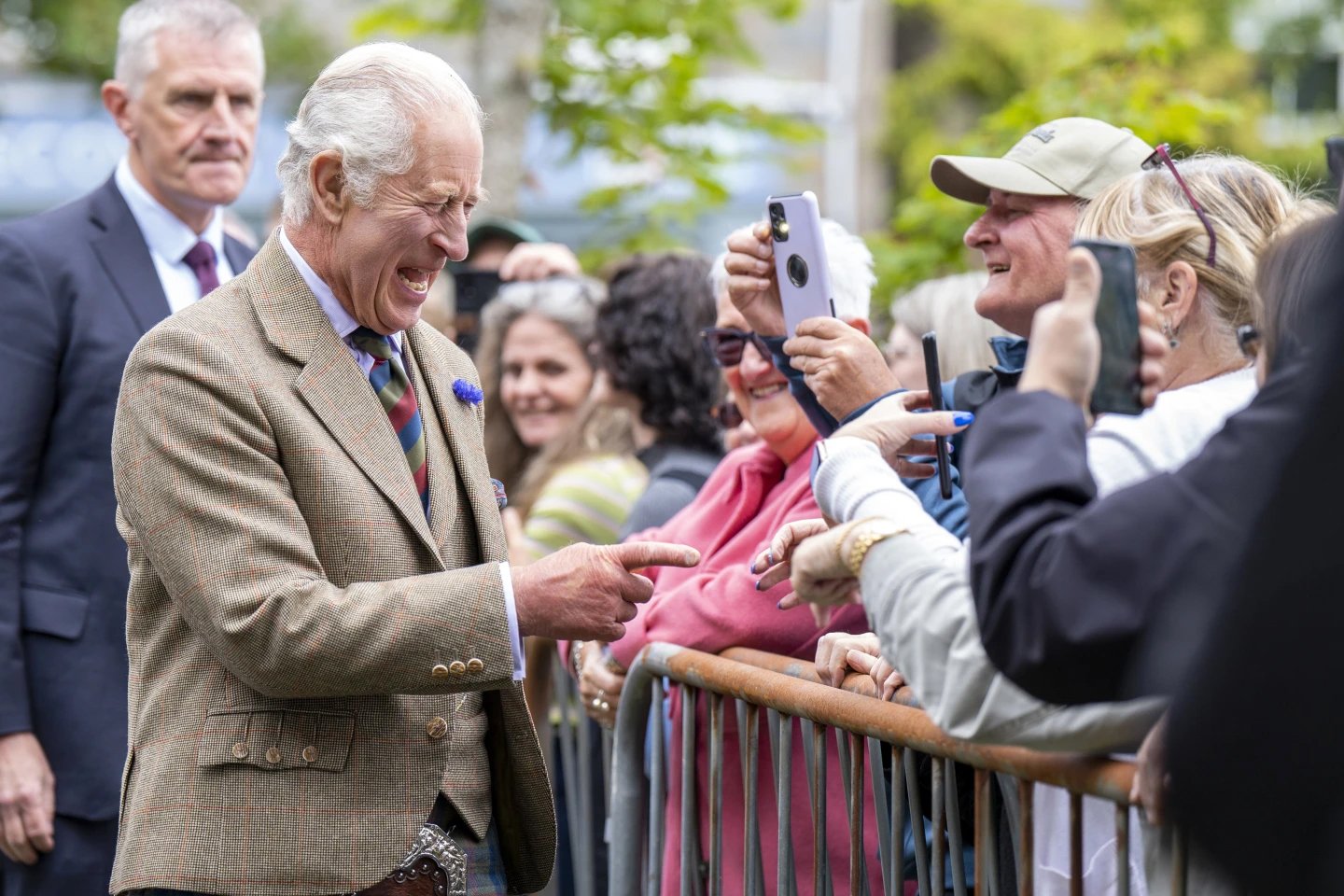
-
The British Royal Family—eMarketing Transformation
-
Critically evaluated the British Royal Family's current digital marketing strategy and outlined a comprehensive eMarketing transformation plan to enhance their engagement through different social media platforms with the global audience.
-
Date: 2024
Medium: Strategy, branding
All the heirs to the British throne. Ranald Mackechnie/ AP Images
-
This executive summary outlined a comprehensive eMarketing strategy designed to revitalise and modernise the digital presence of the British Royal Family. By enhancing their use of digital channels and implementing a content strategy that appeals to a diverse audience, this plan aims to update the Royal Family's image, increase engagement, particularly among younger demographics, and maintain relevance in today's rapidly evolving digital landscape. Key initiatives include an audit of current digital assets, a phased update of web and social media platforms, and intensive digital training for the communications team. These steps are intended not only to strengthen the Royal Family’s online presence but also to enhance their global image and leadership, setting a benchmark for royal institutions worldwide.
-
The modernisation of the British Royal Family began under Queen Victoria, who shifted the monarchy toward a more public-oriented role, emphasising support for charities and the arts (Blakemore, 2021). This evolution continued through the 20th century, with each monarch expanding the family's engagement with national life. Queen Elizabeth II exemplified this during World War II as a car mechanic, embodying the monarchy's participation in "the people’s war" and connecting deeply with public sentiment (Lang, 2022). However, the traditional royal mantra "never complain, never explain," emphasised during her reign, has struggled to meet contemporary expectations for transparency and engagement, particularly highlighted by the challenges faced during the departure of Prince Harry and Meghan Markle from their senior royal roles (Burchfield, 2022). This situation underscores the need for the monarchy to adapt its communication strategies to remain relevant in an era demanding more openness and authenticity.
-
The British Royal Family operates in a unique market defined by ceremonial duties and public service, with Queen Elizabeth II epitomising the role of the ultimate public servant during her 70-year reign (Brecknell, 2022). Each year, they collectively undertake over 2,000 official engagements both in the UK and internationally, support the armed forces, and manage numerous charitable endeavours (Royal, n.d.-b), all funded by The Sovereign Grant (Royal, n.d.-a). Queen Elizabeth modernised the monarchy by televising her coronation and introducing the 'royal walkabout' to forge a more authentic connection with the public (Friel, 2022). However, their digital engagement strategy has been cautious, evidenced by their delayed adoption of platforms like Twitter in 2009 and Instagram in 2019 (Friel, 2022). This conservative approach to embracing digital trends may limit their ability to connect with a rapidly evolving, technology-driven global audience, highlighting a gap between traditional practices and contemporary digital communication needs.
Queen Elizabeth II's 1953 coronation was the first to be televised. PA Images
Queen Elizabeth II on her first "royal walkabout" in 1970. Keystone/Hulton Archive/Getty Images
-
The British Royal Family's market performance, as gauged by engagement metrics and public perception, reveals a generational and regional divide. According to Statista (2024), support is relatively high among older demographics in the UK, with 67% of those aged 50-64 and 80% of those over 65 endorsing the monarchy. However, this support wanes among younger generations, with only 37% among 18-24 year olds in favour. The disparity is even more pronounced in Australia with 38% of those 65+ in favour, dropping to just 24% among 18-34 year olds (Smith, 2023). This suggests that the monarchy's cautious digital engagement strategy may be impacting its relevance, particularly among younger, digitally savvy audiences who value transparency and immediacy in communication.
-
The evaluation matrix according to Chaffey et al. (2019) used to assess organisational strategies is divided into four quadrants, defined by two axes: internal capabilities/ initiatives and external forces/ incentives. The vertical axis, internal capabilities, measures the strength and readiness of an organisation’s internal resources, skills, and processes, indicating how well they align with market demands. High internal capabilities suggest a strong, well-prepared organisation, whereas low capabilities point to significant deficiencies in these areas. The horizontal axis, external forces, evaluates the pressures and motivations from external sources, such as market dynamics, technological changes, and shifting customer expectations, with the scale ranging from low to high.
-
In this framework, the British Royal Family is situated in the "Capacity Building" quadrant. This placement signifies that the Royal Family is currently facing high external pressures, including the rapid evolution of digital media, growing public demands for transparency, and fast-paced technological advancements. However, their internal digital engagement capabilities are not sufficiently developed to effectively handle these challenges. The position in this quadrant reflects a mismatch between the external demands placed on the organisation and its internal ability to respond, indicating that while the external environment evolves quickly, the internal processes and resources of the Royal Family have not kept pace, leading to potential shortcomings in their digital strategy execution.
-
While the British Royal Family is not a business in the traditional sense and does not operate in a competitive market, they still face significant challenges, including changing political dynamics and public scepticism due to historical issues and perceived inequalities (Coughlan, 2023). To address these challenges and enhance their relevance, specific digital engagement goals should be set. Increasing engagement rates on social media is crucial, as it can help the Royal Family appear more authentic and relatable to the public. Specific targets could include boosting the number of interactions per social media post and growing their follower base. Additionally, enhancing website metrics, such as reducing bounce rates and increasing time spent on the site, will also be necessary. By actively improving their digital presence and becoming more active on social media, the Royal Family can not only connect more effectively with the UK public but also raise positive awareness globally. This proactive approach to digital engagement can set a benchmark for authenticity and influence for other royal families around the world.
-
According to Chaffey (2020), an Online Value Proposition (OVP) is essential for entities in the digital space as it outlines the unique value and benefits offered through their online channels. It distinguishes an organisation from competitors by clearly articulating why its digital presence is preferable, focusing on unique content, ease of use, and interactive engagement. An effective OVP not only attracts but also retains users by fulfilling their expectations and providing compelling reasons to choose their platform over others.
-
The British Royal Family’s current online value proposition primarily aims to educate the public about their traditional roles, charitable activities, and historical significance through their official website and social media presence. However, this OVP, while rich in content, often lacks the dynamic engagement necessary to fully captivate and interact with a diverse, modern audience. The content, while informative, generally maintains a formal tone and does not employ interactive or personalised elements that could deepen user engagement. Additionally, the user experience offered by their official platforms can be convoluted, with essential information being difficult to locate and navigate. On social media, their approach is predominantly focused on broadcasting rather than engaging, characterised by infrequent updates and minimal interaction with followers. This style of communication may not effectively leverage the potential of these platforms to foster a real-time, interactive dialogue with the public.
-
To enhance their OVP, the British Royal Family should centre their digital strategy around community building and making their engagements more accessible to a global audience. By focusing on virtual tours of royal residences and events, they can extend the experience of the traditional royal walkabout to those who cannot attend in person. This approach not only broadens accessibility but also highlights their commitment to public service and charitable endeavours. Implementing these digital strategies will allow the Royal Family to engage more deeply with international audiences, reinforcing their role as dedicated public servants and enhancing their impact on global community support. By introducing these enhancements, the Royal Family can offer distinct advantages over offline experiences, reinforcing their credibility and strengthening connections with both the public and the business community.
-
A supply chain encompasses the entire network of entities, processes, and technologies involved in the production and distribution of a product, from raw material acquisition to final delivery to the consumer. It includes coordination among suppliers, manufacturers, and retailers to efficiently manage product creation and distribution. In the digital age, supply chains often expand to include various channels such as offline, eCommerce, mCommerce, and social commerce. A multi-channel approach manages these platforms separately, while an omni-channel approach integrates them to provide a cohesive and seamless customer experience across all available channels (Tridalestari et al., 2022).
-
The current supply chain structure of the British Royal Family predominantly utilises traditional, offline channels. These include physical engagements like official appearances and merchandise sales at royal properties and separated eCommerce website, operating within a multi-channel framework where different channels function independently. This traditional approach focuses on distinct audience segments through specific, isolated channels, such as face-to-face interactions during royal walkabouts or the purchasing of items during visits to royal estates. The use of eCommerce is limited to a separate platform for specific merchandise, and there is minimal strategic focus on mCommerce and social commerce.
-
It is recommended that the British Royal Family transition their supply chain to a sophisticated omni-channel approach to better integrate human interactions with both the UK and global audiences. This would involve enhancing offline events with digital tools such as mobile apps that provide real-time information during royal appearances. Additionally, tighter integration of eCommerce platforms with the main website and digital content would ensure a seamless user experience across all channels. To preserve their unique royal status from commercial influencers and celebrities, it would be prudent to focus mCommerce and social commerce initiatives on engagement and interactive content rather than direct sales. The focus should be on subtly influencing public preferences through their appearances and endorsements. For instance, when Princess Kate wore a gold dress from a local UK designer, Jenny Packham, at the James Bond premiere, it not only promoted the designer but also led to the dress selling out within hours (Evans, 2021), demonstrating the indirect yet powerful influence the Royal Family can wield in boosting local businesses and products without direct sales efforts.
The existing reluctance of the Royal Family to embrace a robust online presence has unfortunately cast them in the eyes of these younger audiences as an outdated and rigid institution, more aligned with past controversies than with modern values.
To counteract this perception and reposition themselves as a progressive and relevant entity, the Royal Family must prioritise digital engagement.
Coldstream Guards on parade during Trooping the Colour. Cpl Stephen Harvey/UK MOD © Crown copyright 2018 via Wikimedia Commons
eMARKETING STRATEGY PROPOSAL
-
The proposed eMarketing strategy for the British Royal Family aims to enhance their digital presence, engage a broader audience, and promote transparency and modernisation across their communications.
Increase engagement: Increase interaction rates across all digital platforms by tailoring unique content specifically to the characteristics and user expectations of each platform.
Expand reach: Grow the global audience, with particular emphasis on younger demographics.
Enhance transparency: Provide insight into the Royal Family's operations and initiatives by delivering consistent updates and behind-the-scenes content, aimed at supporting local communities and effectively representing the British Royal Family on a global stage.
-
Primary audience: Young adults aged 18-35 in the UK, with a focus on those interested in public service, environmental issues, and community development. This demographic is pivotal as they represent the future stakeholders of royal initiatives and are crucial for fostering long-term support for the monarchy’s modernising efforts.
Secondary Audience: The general public with an interest in the heritage and philanthropy activities of the Royal Family. This group includes individuals of all ages who value the historical significance of the monarchy and are supporters of its charitable endeavours, both domestically and internationally.
Various intimate photos by Catherine Middleton, Princess of Wales. Instagram/ @princeandprincessofwales
-
Educational content: The strategy will focus on publishing content that educates the audience about the Royal Family's roles, responsibilities, and societal impacts, with a special emphasis on their charitable work and contributions to global causes. There will also be more content tailored to the younger audiences by incorporating topics relevant to them, such as the Heads Together campaign, a mental health initiative by The Royal Foundation of The Prince and Princess of Wales (Heads Together, n.d.), and highlighting how the Royal Family's activities relate to broader societal trends and challenges. Additionally, educational materials about the UK's history, culture, and landmarks will be included to boost interest in tourism, showcasing the country as a vibrant destination connected to the monarchy's heritage.
Interactive content: The Royal Family will implement interactive sessions and virtual experiences of royal events, alongside online exhibitions that provide global access to palaces and significant ceremonies. These will be designed to engage particularly with young people by facilitating discussions with youth role models and influencers, allowing them to ask questions and raise concerns directly. This approach aims to demonstrate the Royal Family's commitment to modernisation and adaptability, reflecting their willingness to engage with contemporary issues and integrate into the modern world within their capacities.
Real-time updates: Utilising the immediacy of digital media, the Royal Family's online platforms will offer real-time updates and prompt responses to both global and local events. This will highlight their proactive involvement and responsiveness, within the bounds of their capacities as a non-political, ceremonial institution. By showing their quick engagement with current events, the Royal Family can enhance their relevance and maintain a connection with a digital audience accustomed to instantaneous information and interaction.
AP/ Jane Barlow
Getty Images
Across all digital channels, the content strategy will emphasise that the British Royal Family is a historic institution, not a celebrity entity. The tone will remain dignified and informative, adhering to the principle of "never complain, objectively explain," ensuring that all communications are clear, factual, and devoid of personal grievances. This approach will distinguish their digital presence from that of celebrities by focusing on their enduring cultural and philanthropic contributions rather than personal fame.
-
The official Royal website will be redesigned to enhance user experience through streamlined navigation and mobile optimisation (a mock-up website is included in the appendix). A dedicated blog section will be introduced for in-depth articles and updates on Royal activities. This will include infographics and graphs to visually represent data such as the number of engagements conducted by the Royals and the subsequent impact on local businesses. The e-commerce section will be integrated into the official website, or at the very least, linked prominently to ensure authenticity. Each product listing will include a visual reminder of the percentage of profits directed towards charity or a fund, accompanied by a narrative about the artisans behind the product to humanise and highlight the craftsmanship supported by the British Royal.
-
Twitter will be utilised for quick updates, including the time, date, and brief details of upcoming events and announcements. This platform will serve as a real-time communication tool to keep followers informed with the latest happenings in an efficient manner.
-
Instagram will host official announcements and make use of Stories for rapid updates, repurposing content from Twitter for consistency. The platform will also feature interactive posts; photos of everyday citizen of the UK, local communities, and highlights of past Royal engagements; as well as live Q&A sessions, and broadcasts of Royal engagements to engage the audience in a more dynamic way.
-
Facebook will be geared towards disseminating official updates and sharing extensive photo and video content from Royal engagements. It will also include useful links and detailed information about the Royal Family and their activities across the UK, serving as a comprehensive resource for followers interested in the monarchy’s philanthropic efforts and historical significance. Additionally, the platform will feature content about the UK’s rich cultural and historical landmarks, promoting tourism by highlighting destinations associated with the Royal Family and their activities. This strategy aims to attract tourists by showcasing the UK’s unique attractions and the Royal Family's connection to these places.
-
YouTube will host documentaries and mini-series that delve into Royal initiatives and provide historical insights. It will also feature live streams of Q&A sessions and key Royal engagements, offering an in-depth view of the family’s public and charitable activities.
-
On TikTok, the focus will be on short-form videos that showcase the glimpses behind the scenes and personal perspectives of the audience during Royal engagements, aiming to foster a sense of closeness and authenticity. These videos will give the audience a more relatable and intimate view of the Royal Family's daily activities and their impact.
The proposed website layouts for the British Royal Family are designed to enhance engagement with community events and charity causes. They will feature interactive schedules of royal engagements and showcase the positive impacts of these events through detailed success stories.













